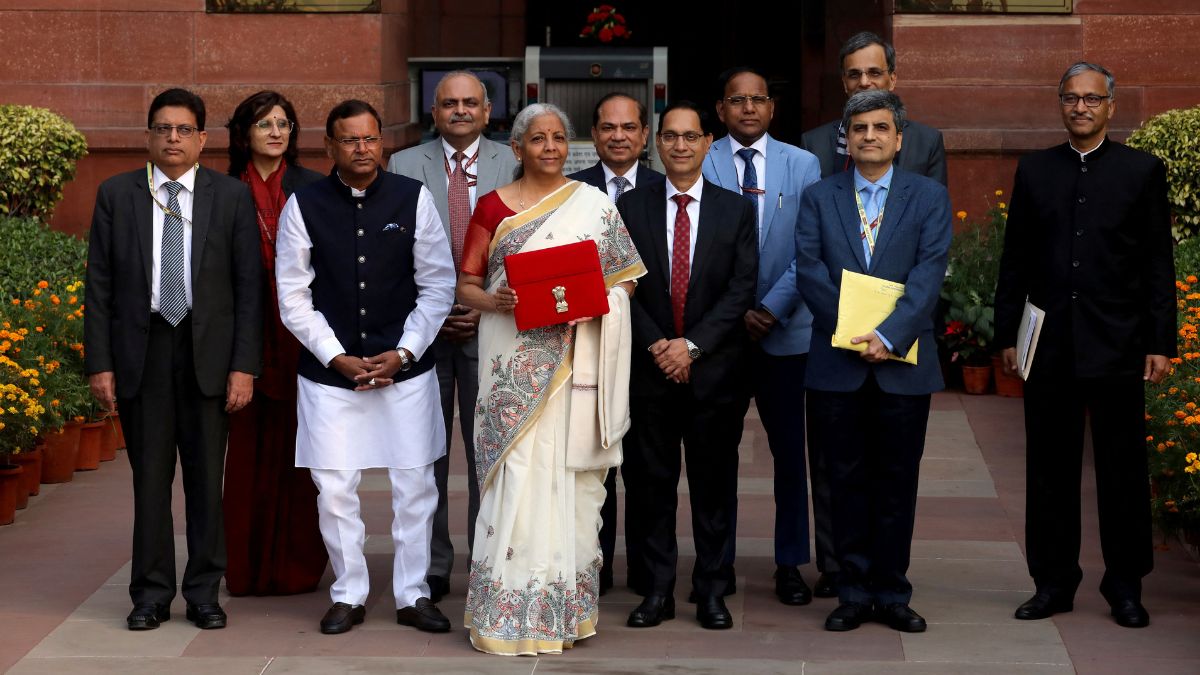The Union Budget 2025-26, presented by Finance Minister Nirmala Sitharaman, has introduced the most significant tax exemption in over two decades.
Under the new tax regime, individuals earning up to Rs 12 lakh annually will have zero income tax liability, marking a major relief for the salaried middle class.
This exemption is even higher for salaried taxpayers, reaching Rs 12.75 lakh, considering the standard deduction of Rs 75,000.
The decision continues the Modi government’s pattern of easing the tax burden on middle-class earners, contrasting with the gradual increases in exemption limits seen during the previous UPA administration.
The latest move represents a sharp rise from the Rs 7 lakh exemption limit set in 2023 and is the largest increase since 2005.
Union Home Minister Amit Shah described the exemption as Prime Minister Narendra Modi’s commitment to the middle class.
In a post on X, he wrote, “The middle class is always in PM Modi’s heart. Zero Income Tax till Rs 12 Lakh Income. The proposed tax exemption will go a long way in enhancing the financial well-being of the middle class. Congratulations to all the beneficiaries on this occasion.”
A look at tax exemptions over the years
The journey of income tax exemptions in India highlights the scale of the latest reform:
2005 – Rs 1 lakh
2012 – Rs 2 lakh
2014 – Rs 2.5 lakh
2019 – Rs 5 lakh
2023 – Rs 7 lakh
2025 – Rs 12 lakh
While the basic exemption limit has now been increased to Rs 4 lakh from Rs 3 lakh under the new regime, the zero-tax threshold of Rs 12 lakh applies only to those whose total income, after deductions, does not exceed Rs 12.75 lakh.
Any amount exceeding Rs 12 lakh will be taxed as per the applicable slab rates.
The announcement also comes in response to long-standing demands from middle-class taxpayers for greater relief. The Modi government has consistently increased exemption limits in its tenure, aiming to boost disposable income and spending power.
The financial impact of the tax relief
Finance Minister Sitharaman highlighted that these reforms have led to substantial savings for taxpayers. The government will forgo Rs 1 lakh crore in direct tax revenue and Rs 2,600 crore from indirect taxes as a result of these changes.
This move is expected to boost spending and stimulate economic growth at a time when India’s GDP is projected to grow at 6.4% in 2024-25, the lowest in four years.
The finance minister also compared the tax burden in 2014 under the Congress-led government to the present, demonstrating how individuals across different income brackets now retain more of their earnings.
“If you compare what we have done today with what was done in 2014, the change in rates has also benefited people earning Rs 24 lakh. Now they have Rs 2.6 lakh more than under the old system,” she stated.
Finance Secretary Tuhin Kanta Pandey further explained the philosophy behind the change, stating, “On the average Rs 1 lakh per month (income), you need not pay tax.”
Who benefits and by how much?
The tax savings under the new regime are substantial:
For Rs 8 lakh annual income:
2014 Tax: Rs 1 lakh
2025 Proposal: Rs 0
Savings: Rs 1 lakh
For Rs 12 lakh annual income:
2014 Tax: Rs 2 lakh
2025 Proposal: Rs 0
Savings: Rs 2 lakh
For Rs 24 lakh annual income:
2014 Tax: Rs 5.6 lakh
2025 Proposal: Rs 3 lakh
Savings: Rs 2.6 lakh
Additionally, even compared to the 2024 tax rates, taxpayers will see further relief:
For Rs 8 lakh income: Rs 30,000 savings
For Rs 12 lakh income: Rs 80,000 savings
For Rs 24 lakh income: Rs 1.1 lakh savings
Officials have also highlighted that the benefits of the new tax structure extend beyond middle-income earners. Even individuals earning Rs 24 lakh annually will experience a significant reduction in tax liability, making the system more inclusive and taxpayer-friendly.
Encouraging economic growth through tax reforms
Beyond providing relief to taxpayers, the government sees this move as an economic stimulus. By putting more money into people’s hands, consumer spending is expected to rise, driving economic growth.
The Economic Survey for 2024-25 estimates India’s GDP growth at 6.4 per cent, and higher disposable income could serve as a buffer against an economic slowdown.
The new tax regime, introduced in 2020, was designed with the millennial workforce in mind — offering simplicity and lower tax rates without the need for numerous deductions.
With the latest increase in the exemption limit, the government hopes to further encourage tax compliance and formalise more of the economy.
With inputs from agencies


)
)
)
)
)
)
)
)
)



